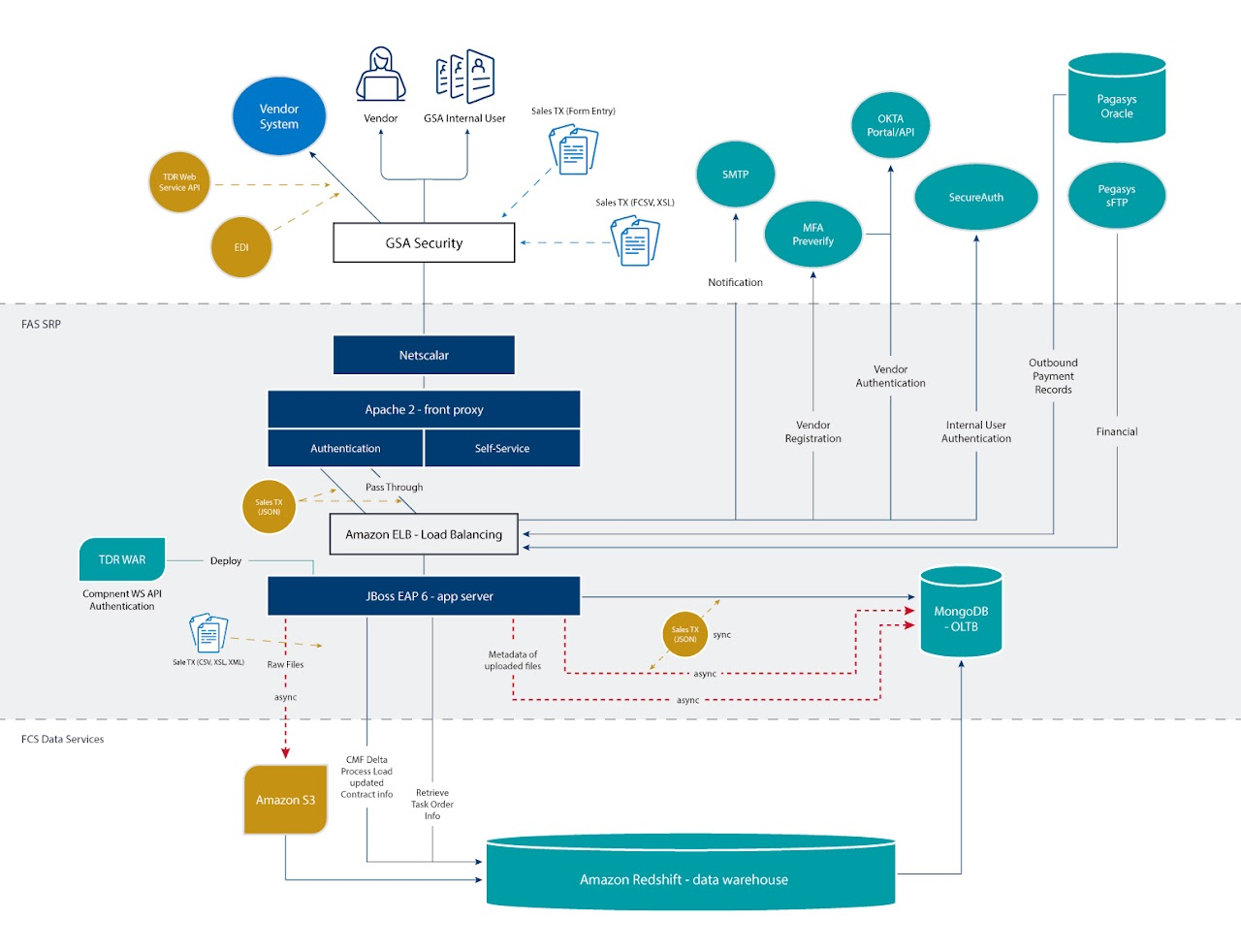Sales Reporting Portal (SRP)
Background
On June 23, 2016, the U.S. General Services Administration published a General Services Administration Acquisition Regulation final rule requiring vendors to report transactional data from orders placed against certain Federal Supply Schedule contracts, Governmentwide Indefinite-Delivery, Indefinite-Quantity contracts, and Government-wide Acquisition Contracts. Under the MAS Program, TDR was implemented as an optional pilot under specific Schedules and Special Item Numbers (gsa.gov).
The Federal Acquisition Service (FAS) Sales Reporting Portal (SRP) supports the collection of TDR data required by FAS procurement programs including:
- GSA MAS:
- Multiple Award Schedules
- Blanket Purchase Orders
- Specialty Programs
- MFRS
- OS4
- 2GIT
- GSA Non-MAS:
- Governmentwide Acquisition Contracts (GWAC)
- Polaris
- Multi- Agency Contracts (MAC)
- OASIS+
- GSA Commercial Platform
- VA Federal Supply Schedules
SRP is used by FAS vendors to report transactional sales data from their contracts and to pay their Industrial Funding Fee (IFF) and Contractor Access Fee (CAF).
Vendors submit their sales data using a variety of methods including:
- Basic Form Entry UI
- Excel/CSV files
- EDI
- API
SRP integrates with GSA Pegasys and the Dept. of Treasury's Pay.gov system to accept and reconcile financial transactions related to the IFF and CAF.
SRP supports some internal acquisition workforce business processes such as:
- Guaranteed Minimums
- Refunds
- Financial Claims
- Contract Closeouts.
System Architecture
Outside SRP Application or FCS-D Boundary Considerations: This section details the users & methods of access as well as integrations with other applications or systems. The top left section depicts the multiple methods of data submissions received by vendors: EDI, TDR Web Services (API), Form Entry web UI, and File Upload web UI. While EDI or API submissions are provided by a vendor's system and Form Entry and File Upload are provided by the users themselves in a GSA system, all methods are scanned and validated. The main users of FAS SRP are GSA vendors and GSA internal users, and they access the application through several multi-factor authentication solutions (Okta, SecureAuth). The yellow lines flowing from "SMTP" to the users denote the fact that SMTP is being leveraged to send auto-notifications. The top right section depicts the integrations outside of the application or FCS Data Services boundaries, including: FCS API Framework, GSA SMTP, Okta, GSA SecureAuth, and GSA Pegasys.
FAS SRP Boundary: FAS SRP follows three-tier modern web architecture design for web applications that separates the application into three main tiers or layers: the presentation tier, the application tier, and the data tier. In this type of architecture, request handling, load balancing, and high availability are key components at each layer.
-
Presentation Tier (Web Layer):
The presentation tier is the first point of contact for the client's web browser. It handles user interactions, provides the user interface, and responds to user requests. In this architecture, the presentation tier is hosted on Apache web servers, which serve static content and act as reverse proxies to route requests to the application tier. Apache web servers are distributed across multiple instances for load balancing and high availability, managed by a load balancer (NetScaler).
-
Application Tier (App Server Layer):
The application tier handles the dynamic aspects of the application, such as user authentication/authorization, business workflows, and data processing. In this architecture, JBoss application servers are used along with ELBs to distribute traffic across multiple JBoss instances.
-
Data Tier (Database Layer):
The data tier stores and manages the application's data. FAS SRP uses MongoDB as the NoSQL database solution, suitable for handling large volumes of data and providing high availability. It consists of a cluster of MongoDB servers for data replication and fault tolerance.
FCS Data Services Boundary: FCS Data Services integrates with SRP by providing an S3 bucket to facilitate the sharing of data, pulling SRP data every night and storing it within Amazon Redshift tables, and supplying SRP's MongoDB with daily updates for the MAS Contract Master File (CMF). The FCS-D Amazon Redshift tables enable other users of the FCS ecosystem to obtain and interact with the TDR data.

SRP is a JEE app that runs on a JBoss application server, using a Mongo database as its persistence data store. It is currently an EBTA tenant on the FCS Platform with plans to migrate to MCaaS. Two primary user groups of SRP data are EDA and GSA Finance.

